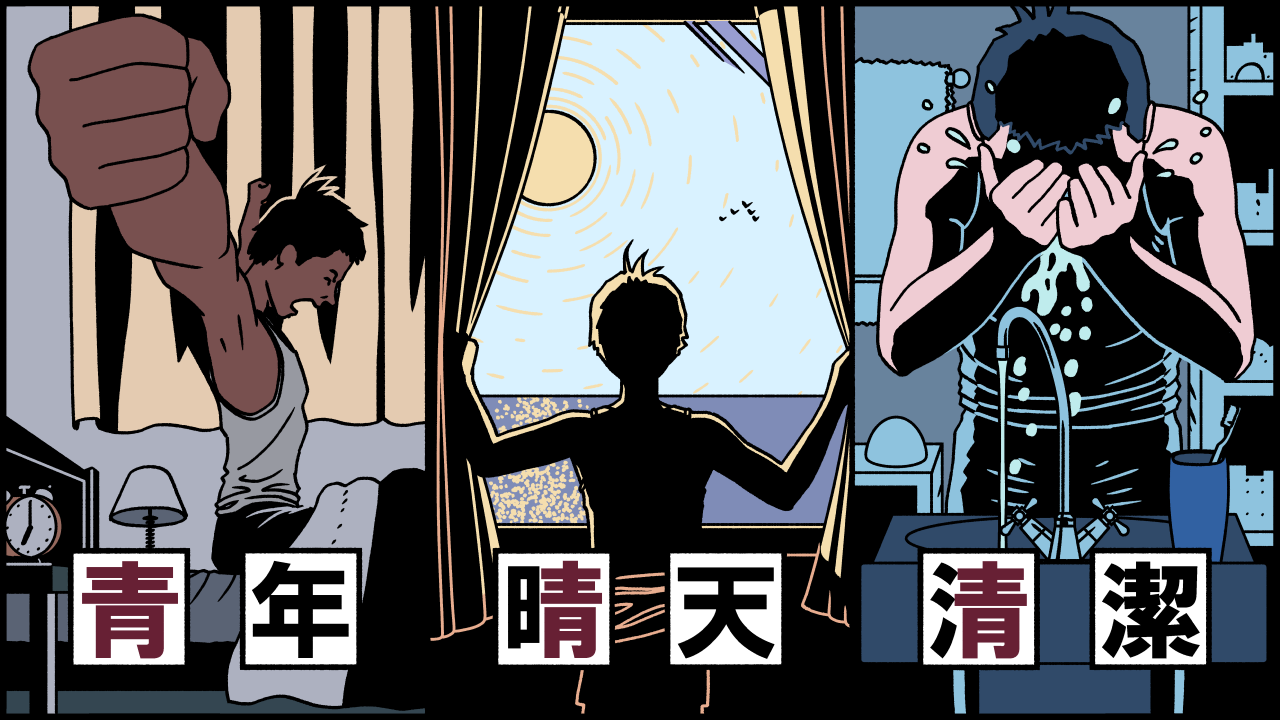
Learning and Loving the Japanese Language
Shared Sounds: Kanji’s Patterns of Pronunciation
Language Culture- English
- 日本語
- 简体字
- 繁體字
- Français
- Español
- العربية
- Русский
Foreign learners often focus on meaning when they study kanji. At a basic level, there are characters that look like the things they represent, such as 山 (mountain) or 火 (fire). It is also possible to combine two or more kanji in a simple “story”; for example, when grain (禾) turns the color of fire (火) it is autumn (秋). However, in many cases kanji parts indicate sound rather than meaning.
In the first grade, Japanese children learn the similar-looking kanji 早 (early) and 草 (grass), which are most commonly seen in the forms haya(i) and kusa. Look at the compounds 早朝 (early morning), pronounced sōchō, and 雑草 (weeds), pronounced zassō, though and one can see that in these words the two characters are both pronounced sō. This is no coincidence, and relates to characters’ origins in Chinese.
Shared “Chinese” Pronunciation
As Japan did not develop its own written language, it adapted Chinese characters to use as a script. Naturally, there was a spoken Japanese language, so in many cases native words became associated with their Chinese character equivalents, such as how the Japanese word tsuki (moon) came to be written using the character 月. The originally Japanese pronunciation for kanji is known as the kun reading.
But most kanji also have an on reading, based on Chinese pronunciation, as new words were imported into Japanese along with new characters. The on reading is typically used in compounds that may be more formal or associated with the written language. There are simple examples too, however. The word 満月 (full moon), pronounced mangetsu, uses the on reading getsu for 月.
Why is this important? Well, when Chinese scribes devised new characters, one common method was to show shared pronunciation through including the same element. These patterns are preserved in the “Chinese” on readings for many kanji, as the examples below demonstrate. At the same time, they are not always neat, and there can be exceptions. Given such factors as the range of Chinese dialects and how words may have entered Japanese centuries apart, this variation is understandable.
| Patterns of kanji with shared elements and the same pronunciation |
|---|
| 交通 (kōtsū), traffic; 学校 (gakkō), school; 効率 (kōritsu), efficiency |
| 先生 (sensei), teacher; 惑星 (wakusei), planet; 性格 (seikaku), personality |
| 青年 (seinen), youth; 晴天 (seiten), fine weather; 清潔 (seiketsu), clean; 冷静 (reisei), calm; 精神 (seishin), mind/spirit |
| Patterns showing exceptions |
| 寺院 (jiin), temple; 時間 (jikan), time; 維持 (iji), maintain; BUT 詩人 (shijin), poet |
| 豆腐 (tōfu), tofu; 冒頭 (bōtō), beginning; 登録 (tōroku), register; BUT 短期 (tanki), short-term |
All of the kanji in bold are studied during elementary school. The kanji that appears first is the common element in each set.
An Aid to Memory
Being aware of these patterns is helpful when reading Japanese. It may be possible to guess how a word is pronounced, which in turn may contribute to dredging up its meaning from memory. Even if full recall is elusive or the word is unfamiliar, it becomes easier to check it in a dictionary. This can be particularly useful when the text is printed, and there is not the option of copying and pasting.
Incidentally, memorizing pronunciation for kanji is just as important a task as learning their meaning. On encountering new characters, it is worth noting if they have any familiar near-doppelgangers with the same reading as a way of quickly fixing the pronunciation in one’s mind. The more kanji one learns, the more these patterns become apparent.
While there is some possibility of confusion, I feel that the sound patterns within the kanji corpus should make understanding written Japanese easier. On the other hand, when writing by hand it can be a common mistake to substitute similar characters (although writing by hand tends to be lower priority for many non-Japanese learners). In any case, whether one feels them to be a help or a hindrance, it is useful and intriguing to appreciate the principles underlying the language.
(Originally written in English. Illustrations by Mokutan Angelo.)